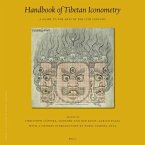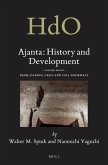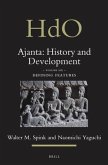This book is about how mythology may be purposively adapted in the service of theology. It does so at the hand of Hayagr?va, since the 14th century C.E. revered as a full form of the Supreme Lord Vi u in the local ?r?vai ava tradition of South India, but originally a relatively minor pan-Indian deity. Convincingly laying bare the complexity in respect of the pan-Indian images of Hayagr?va, it makes clear that there is no single unilinear history of this deity. It subsequently reconstructs the '?r?nivai ava History' of Hayagr?va, and brings out the selectivity involved in borrowing materials from the pan-Indian and local levels. Amidst the incredible complexity encountered here, this study exposes, however, that the emblems and functions of different images show continuity, although a god's status may change according to the sect.
Hinweis: Dieser Artikel kann nur an eine deutsche Lieferadresse ausgeliefert werden.
Hinweis: Dieser Artikel kann nur an eine deutsche Lieferadresse ausgeliefert werden.








